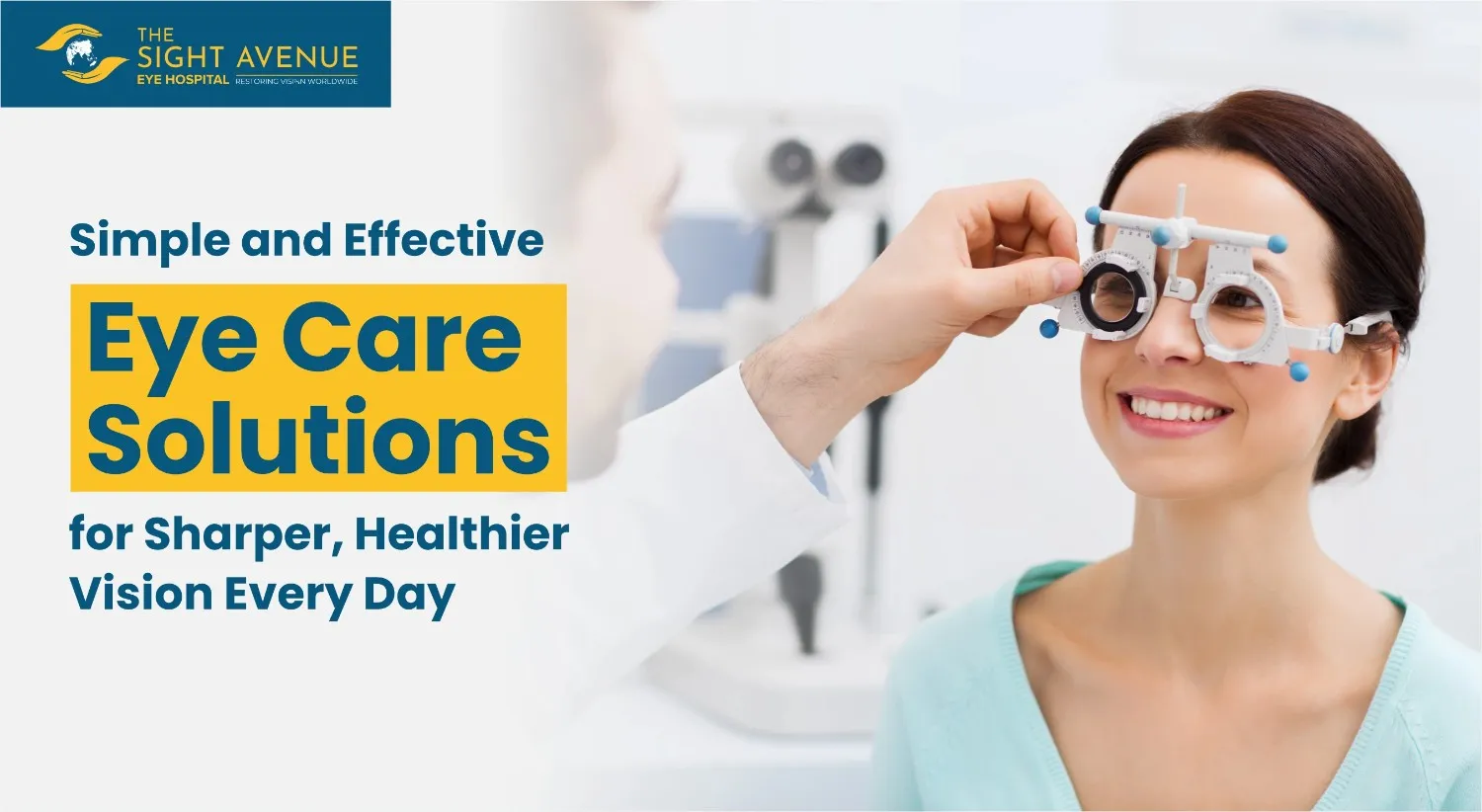Early Diagnosis of Inherited Eye Diseases: Why It Matters

Inherited eye diseases are not common; but very stressful for people who have been facing eye diseases since birth. Inherited eye diseases have a quite profound impact on a person's vision, which creates many challenges in individual life. Early detection of these inherited eye diseases can help you prevent these diseases, and with the help of this blog, you can understand inherited eye diseases properly.
What Are Inherited Eye Diseases?
Inherited eye diseases are genetic conditions passed down from parents to their children. These diseases can affect various parts of the eye, leading to vision impairment or blindness. Some common inherited eye diseases include:
- Retinitis Pigmentosa: A group of genetic disorders that cause retinal degeneration , leading to night blindness and peripheral vision loss.
- Stargardt Disease: An inherited disorder that affects the macula, resulting in central vision loss.
- Glaucoma: While often considered an age-related condition, certain types of glaucoma are inherited and can lead to optic nerve damage.
- Congenital Cataracts: Clouding of the lens present at birth, which can significantly impact vision if not treated early.
- Leber’s Congenital Amaurosis: A severe retinal dystrophy that causes significant vision loss at an early age.
The Role of Genetics in Eye Diseases
Genetics is quite a relevant source behind the development of inherited eye diseases. Mutations in specific genes can cause abnormal protein production, which affects the structure and function of the eye. Understanding the genetic basis of these diseases is essential for developing targeted treatments and interventions.
Key Points:
- Genetic Mutations: Changes in DNA can lead to dysfunctional proteins that disrupt normal eye function.
- Family History: A detailed family medical history can help identify individuals at risk of inherited eye diseases.
- Genetic Testing: Advances in genetic testing allow for the identification of specific mutations, aiding in early diagnosis and personalized treatment plans.
Why Early Diagnosis Matters
Early diagnosis of inherited eye diseases is vital for several reasons. It allows for timely intervention, better management of symptoms, and improved outcomes. Here’s why early detection is crucial:
1. Preventing Vision Loss:
- Timely Treatment: Early diagnosis enables the initiation of treatments that can slow disease progression and prevent further vision loss.
- Monitoring Progression: Regular monitoring of the disease allows for adjustments in treatment plans to optimize vision preservation.
2. Genetic Counseling:
- Family Planning: Genetic counseling provides valuable information for family planning, helping individuals understand the risks of passing on the disease.
- Support and Resources: Counseling offers support and resources to help families cope with the diagnosis and its implications.
3. Access to Clinical Trials:
- Innovative Treatments: Early diagnosis may provide access to clinical trials exploring new treatments and therapies, offering hope for improved outcomes.
- Contribution to Research: Participation in clinical trials contributes to the advancement of medical research and the development of new treatments.
Methods of Early Diagnosis
Several diagnostic tools and methods are available to detect inherited eye diseases early. These include:
1. Comprehensive Eye Exams:
- Routine Screening: Regular eye exams are crucial for early detection of abnormalities and signs of inherited eye diseases.
- Detailed Assessment: Eye exams include visual acuity tests, retinal examinations, and intraocular pressure measurements.
2. Genetic Testing:
- Identification of Mutations: Genetic testing can identify specific mutations responsible for inherited eye diseases.
- Personalized Treatment: Results from genetic tests can guide personalized treatment plans and interventions.
3. Imaging Techniques:
- Optical Coherence Tomography (OCT): OCT provides detailed images of the retina, helping detect structural changes associated with inherited eye diseases.
- Fundus Photography: Captures images of the retina to monitor disease progression and treatment efficacy.
4. Electrophysiological Tests:
- Electroretinography (ERG): Measures the electrical responses of the retina to light stimuli, helping diagnose retinal disorders.
- Visual Evoked Potentials (VEP): Assesses the electrical activity in the brain in response to visual stimuli, useful for diagnosing optic nerve disorders.
Living with Inherited Eye Diseases
While living with an inherited eye disease can be challenging, early diagnosis and intervention can significantly improve quality of life. Here are some strategies to manage the inherited eye diseases:
1. Adaptive Technologies:
- Assistive Devices: Tools like magnifiers, screen readers, and braille displays can help individuals with vision impairment maintain independence.
- Adaptive Software: Software designed for visually impaired individuals can enhance accessibility and usability of computers and mobile devices.
2. Vision Rehabilitation:
- Training Programs: Vision rehabilitation programs offer training and resources to help individuals adapt to vision loss and perform daily activities.
- Support Groups: Joining support groups provides emotional support, shared experiences, and practical advice for managing the condition.
3. Lifestyle Adjustments:
- Healthy HabitsMaintaining a healthy lifestyle, including a balanced diet and regular eye exercise, can support overall eye health.
- Protective Measures: Using protective eyewear and managing chronic conditions like diabetes can help prevent further vision deterioration.
Conclusion
Early diagnosis of inherited eye diseases is essential for managing and improving outcomes. Timely detection allows for proactive measures to preserve vision and enhance the quality of life. With advances in genetic research and medical technology, you can now achieve better outcomes. So if you want to avoid these inherited eye diseases from developing, then feel free to visit The Sight Avenue, the best eye hospital in Gurgaon.
Recent Blogs
Eye problems? Searching for an eye specialist near me in Delhi NCR? The Sight Avenue has 5 eye clinics in Delhi NCR. Contact us today!
Eye Hospital in Delhi
- The Sight Avenue
- The Sight Avenue
- The Sight Avenue
E-82-A, Ground Floor, Hansraj Gupta Rd, Greater Kailash I, New Delhi, Delhi 110048
Email:enquiry@thesightavenue.com
Tel : 011-4666 0666
Mob : +91-8883330799
Fortis Hospital, Escorts Okhla, New Delhi
Fortis Hospital, Vasant Kunj, New Delhi





